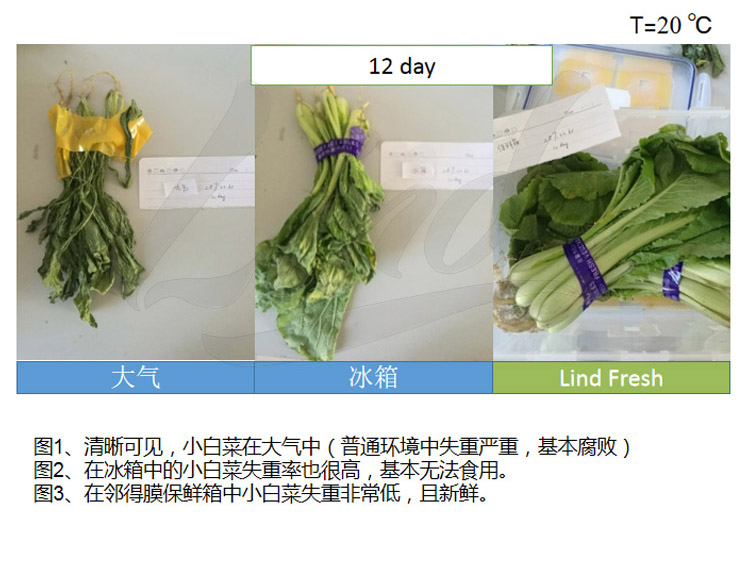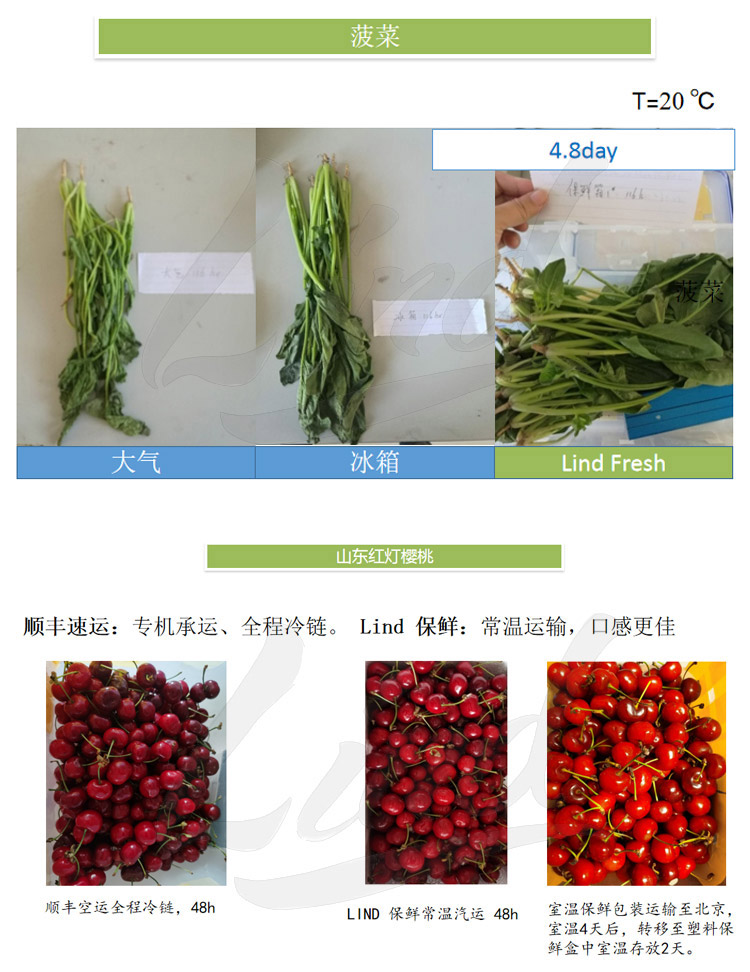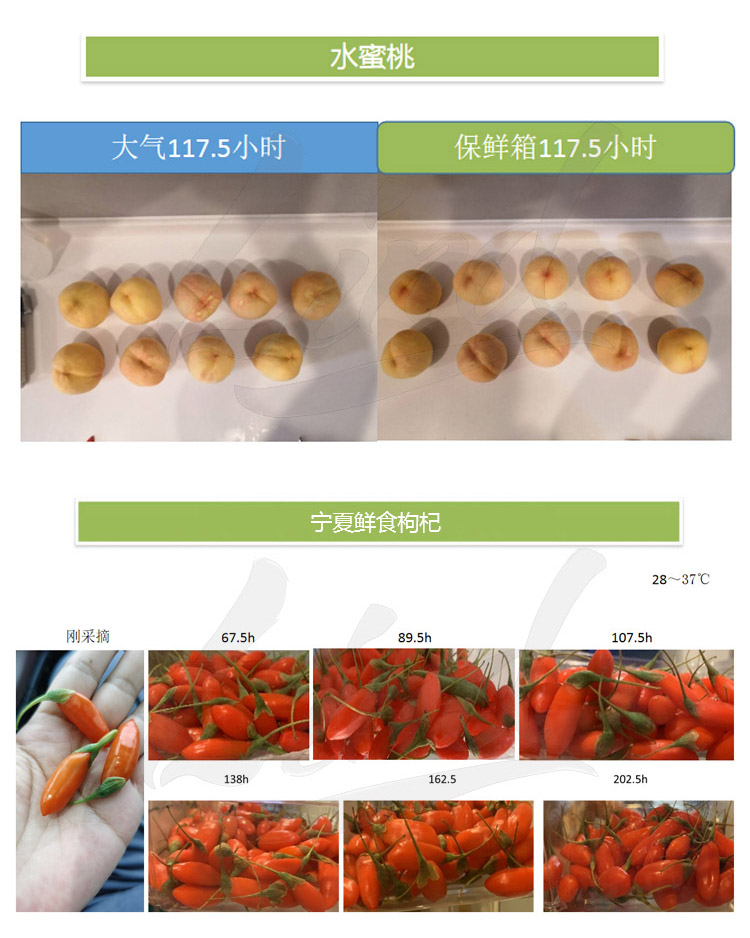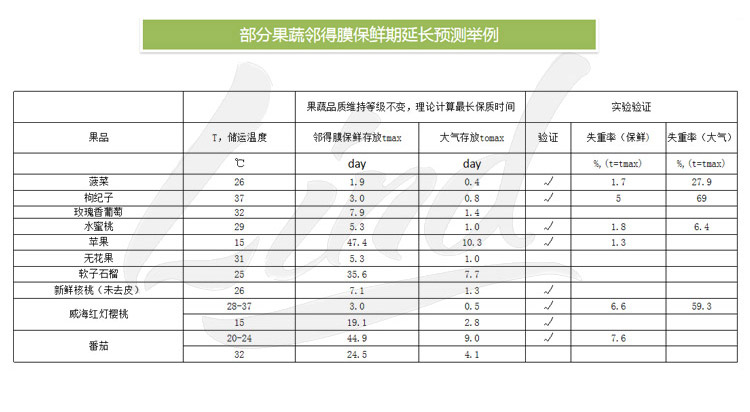In the next decade, the prospects of the fruit and vegetable preservation industry market are very attractive. Industry insiders estimate that China's fresh-keeping technology has a market of up to 60 billion RMB. However, due to the seasonal, regional and perishable nature of the production of fruits and vegetables, coupled with the diversity of the circulation environment, thefresh-keeping Storage and transportation preservation of fruits and vegetables in China is still a difficulty.
In China, fruit and vegetable production has become a pillar industry of rural economy. In developed countries such as Europe and America, the post-production loss rate of agricultural products is only about 1.7% ~ 5%, while in China, the loss rate of fruits and vegetables after picking due to packaging, storage and transportation and other factors caused by corruption is as high as 20 ~ 30%. Especially after China's entry into WTO, the tariff has been lowered and foreign fruit and vegetable products have poured into China, which has weakened the competitiveness of China's fruit and vegetable products. Reducing the decay loss of fruit and vegetable products, improving the utilization of agricultural resources and increasing the added value of agricultural products have become an urgent task of agricultural modernization in China. Statistical data show that if the loss of fruits and vegetables in China is reduced by 3% to 5%, the loss of fruits and vegetables can be reduced by more than 2 million tons per year. If the loss is reduced by 15%, the output value of fruits and vegetables can increase by 12 billion RMB. China is a agriculturallarge country with a large population. The fruit and vegetable production and food industry are developing rapidly, but the related product preservation, storage and transportation technology is relatively backward. China produces 300 million tons of vegetables and 60 million tons of fruits every year. However, due to the backward preservation industry, 80 million tons of fruits and vegetables rot every year, with a total loss value of nearly 80 billion RMB. In other words, more than 20% of fruits and vegetables become garbage in the circulation process. Improper packaging is one of the important reasons for the decay loss of fruits and vegetables. According to statistics, the postpartum storage capacity of agricultural products in developed countries can account for 70% ~ 80% of the total commodities, while that in China is only about 25%. It can be seen that the weakness of circulation and storage links has become an important factor restricting the development of fruit and vegetable industry in China.
The main problem of storage, transportation and preservation of fruits and vegetables in China is that the cold chain is not complete, for example, more than 90% of vegetables in Japan have been pre-cooled. In China, the utilization rate of precooling technology is only 5%. The production of fruits and vegetables is scattered, and the circulation and management are chaotic, which makes it difficult to popularize and use the pre-cooling and air-controlled fresh-keeping packaging technology which is currently popular internationally. The preservation technology suitable for China's agricultural economic structure is lacking; The pace of practical application is slow.
Therefore, the research and development of new preservation technologies suitable for China's agricultural production mode and accelerating the industrialization of fresh food preservation technology are undoubtedly of great significance to improve the overall level of agricultural products and food processing industry and international market competitiveness, as well as to reduce the loss rate of fruits and vegetables in China, make fruits and vegetables to be transported and stored in freshness.
In view of the physiological changes of fruits and vegetables after harvest, measures should be taken mainly from the following aspects to achieve the freshness and quality of fruits and vegetables: 1) Reduce respiration and extend the storage period; 2) Reduce the transpiration of vegetable storage; 3) Inhibit the post-harvest ripening and senescence; 4) Improve disease resistance, and use effective technical means to control the damage of rot pathogens to fruits and vegetables.
Commonly fresh-keeping (or quality preservation) methods are :(1) chemical preservation; (2) freezing preservation; (3) vacuuming and high temperature sterilization to preserve quality; (4) vacuuming and nitrogen filling for preservation; (5) compound atmosphere preservation; ( 6) Natural biological preservation; (7) Electronic technology preservation method.
There are many varieties of fruits and vegetables, the respiration rate is very different, and the air permeability of packaging materials is widely required. The relative ratio of CO2 and O2 concentration in the modified atmosphere packagingof fruits and vegetables depends on the ratio of the permeability coefficient of CO2 and O2 of the packaging film material (β=PCO2/PO2). Therefore, the permeability coefficient ratio of the film β is usually used to represent the permeability of the film. At present, the β value of plastic film for fruit and vegetable packaging is generally concentrated in the narrow range of 3 ~ 6, which is far from meeting the requirements of various fruit and vegetable respiration rates. The only way to solve this contradiction is to use porous film packaging.At present, the application of porous film is one of the development trends of modified atmosphere packaging technology for fruits and vegetables, and there is a broad development prospect in the field of modified atmosphere packaging for fruits and vegetables. Due to the multi-dimensional designability of microporous parameters, the Lindmembrane is an ideal material for fresh fruit and vegetablepreservationpackaging.
Several years of experiments and research have shown that the function of Lind membrane is to control the respiration, air permeability, moisture permeability, waterproof and block the entry of microorganisms through microporous. Lind membrane preservation technology for fruits and vegetables is a new pure physical preservation technology. Experimental results show that its preservation effect is better than that of low-temperature storage. For the storage and transportation of some fruits and vegetables, it is not only a fresh-keeping technology that can replace the cold chain, but also a fresh-keeping packaging technology suitable for the agricultural economic structure in China.




